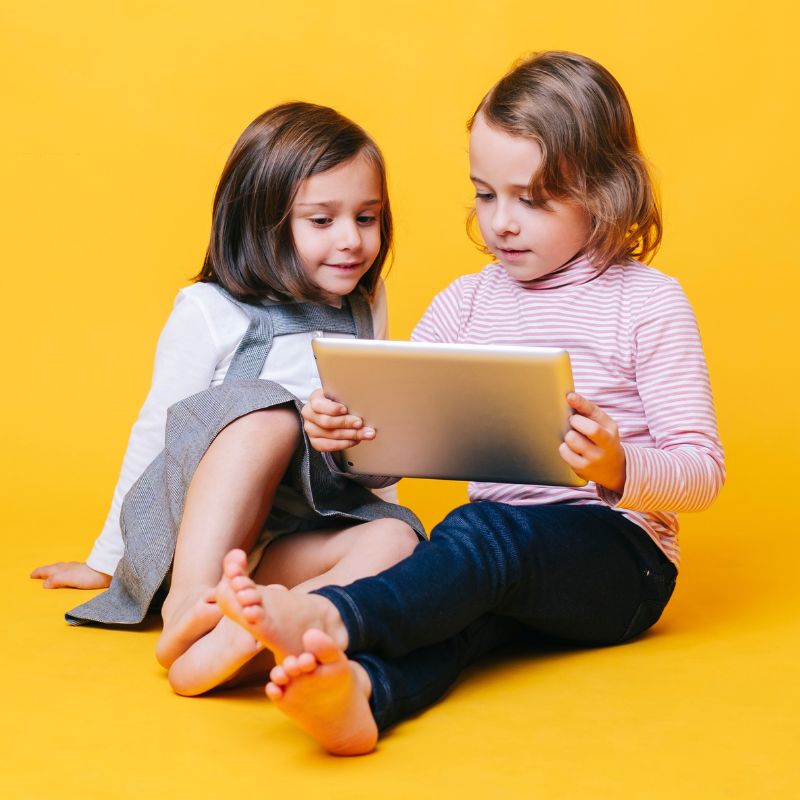
Kids Tablet: Your Guide to Educational Fun
Kids Tablet
Choosing the Perfect Blend of Fun and Education
Amazon Fire HD Kids Edition:
Kids Tablet – These tablets come with a kid – proof case, parental controls, and a 2-year worry – free guarantee. They also include a one – year subscription to Amazon Free Time Unlimited, providing access to a vast library of age – appropriate content.
The Amazon Fire HD Kids Edition tablets were designed specifically for children, offering a combination of robust parental controls, a rugged design, and age – appropriate content. So here are some key features and details:
Kid-Proof Case – Kids Tablet:
The tablet comes with a durable, colorful case that is designed to withstand drops and bumps, helping to protect the device from everyday wear and tear.
Kid-Proof Cases are like must – have shields for parents who want to keep their kids’ tablets safe from the bumps and spills that happen when kids are being, well, kids. In this guide, we’ll look at Kid-Proof Cases in detail, checking out what they can do, why they’re good, and how they give parents peace of mind by making sure their kids’ gadgets last a long time.
Read also – 16 Month old baby – All you need to know
The Importance of Kid-Proof Cases:
1. Durability Against Drops and Mishaps:
Kid-Proof Cases are made with strong materials that really protect tablets from oops moments like drops and spills. So this toughness means the tablet can handle the rough and tumble that often comes with kids having fun and exploring.
2. Peace of Mind for Parents:
Kid-Proof Cases are mainly there to give parents peace of mind. So they work like a shield, making it way less likely that the tablet will get messed up. Also with a Kid-Proof Case, parents can feel better about letting their kids use technology without worrying too much.
Features of Kid-Proof Cases – Kids Tablet:
1. Reinforced Materials:
Kid-Proof Cases usually get made from extra – strong stuff like silicone or shock – absorbing materials. These materials soak up the hit when the tablet takes a tumble, stopping it from getting messed up. Also the tough build makes sure the case stays in one piece even after a bunch of accidents.
2. Secure Fit:
A snug and secure fit is a hallmark of a good Kid-Proof Case. So the case should envelop the tablet entirely, leaving no vulnerable areas exposed. This secure fit not only enhances protection but also makes it easier for children to handle the tablet without the risk of accidental slips.
3. Accessibility Features:
Despite their robust design, Kid-Proof Cases are designed to maintain accessibility to the tablet’s ports, buttons, and features. This ensures that parents can still easily charge the device or connect headphones without having to remove the case regularly.
Choosing the Right Kid-Proof Case:
1. Compatibility:
When picking a Kid-Proof Case, make sure it fits your tablet model exactly. Manufacturers usually make cases that are just right for certain tablets, so they protect well and still let you use all the features.
2. Design Options – Kids Tablet:
Kid-Proof Cases come in various designs and colors, catering to different preferences. Some cases are clear, allowing the original design of the tablet to show through, while others feature vibrant colors and playful patterns that may appeal to children.
3. Ease of Cleaning:
Given the nature of kids interactions with technology, Kid-Proof Cases should be easy to clean. So look for cases that are resistant to stains and can be wiped down effortlessly to maintain hygiene.
The Worry-Free Solution – Kids Tablet:
Kid-Proof Cases offer parents a worry – free solution to the common concerns associated with children using tablets. These cases actively contribute to the overall well – being of the tablet, ensuring that it remains functional and intact over an extended period.
Read also – The impact of teenage pregnancy on educational attainment
Case Studies: Real-Life Impact:
1. Testimonials from Parents:
Lots of parents say Kid-Proof Cases really work in keeping their kids’ tablets safe. Also people often talk about how these cases stopped damage from happening, which means parents don’t have to deal with spending money or dealing with the hassle of fixing or getting a new device.
2. Long-Term Cost Savings – Kids Tablet:
Investing in a quality Kid-Proof Case can translate into long – term cost savings. The upfront cost of a durable case is significantly lower than the potential expenses incurred from repairing or replacing a tablet damaged by accidental drops.
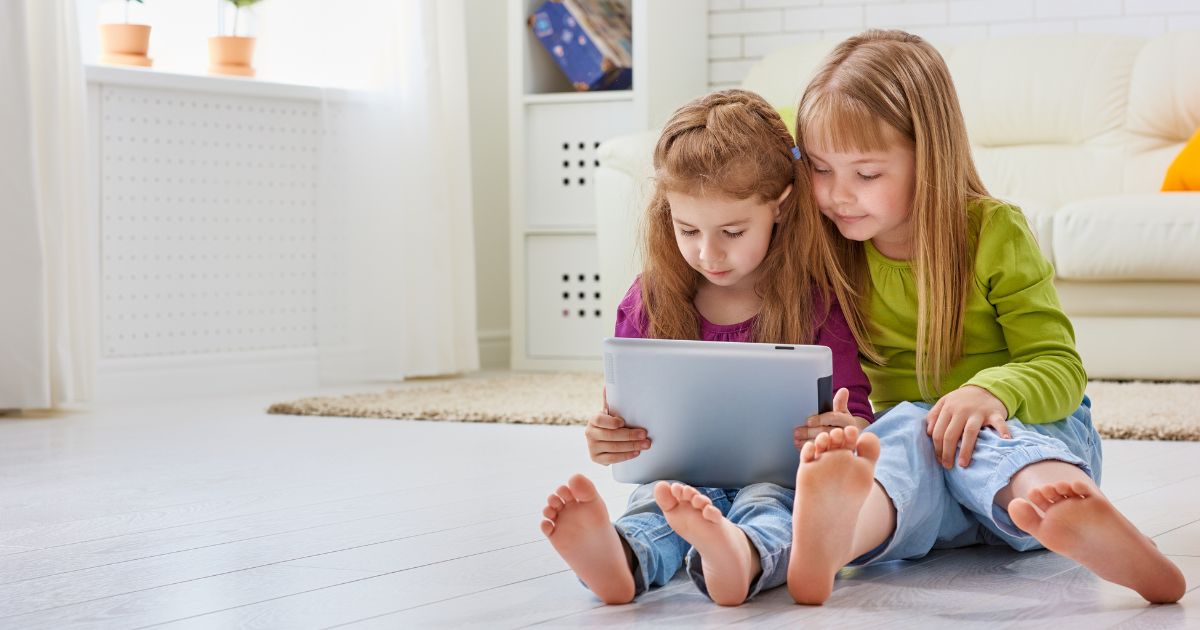
Worry-Free Guarantee:
The Fire HD Kids Edition comes with a 2-year worry – free guarantee. So this means that if the tablet is damaged, Amazon will replace it, no questions asked.
So in the fast – changing world of kids’ tech, a Worry-Free Guarantee is like a promise for parents who want to protect the money they put into their kids’ devices. Also in this detailed look, we’ll break down the parts and perks of a Worry-Free Guarantee, explaining what it does, how it makes parents feel better, and what it practically means for parents trusting their kids with important tech stuff.
The Essence of a Worry-Free Guarantee:
1. Financial Protection:
A Worry-Free Guarantee is basically there to help parents financially. It’s like a safety net, covering the possible costs if something accidentally goes wrong or the device doesn’t work while a child is using it.
2. Peace of Mind – Kids Tablet:
A Worry-Free Guarantee is all about giving parents peace of mind. Also it promises that if something unexpected happens, like the device breaking, parents don’t have to worry about extra costs for fixing or getting a new one. It takes away the stress of unexpected expenses.
Features of a Worry-Free Guarantee:
1. Comprehensive Coverage:
A strong Worry-Free Guarantee usually covers a lot of things, like accidents, problems with the hardware, or any unexpected issues that might mess up how the device works.
2. Simple Claim Process – Kids Tablet:
An effective Worry-Free Guarantee should make it easy for parents to claim. The process should be simple, so parents don’t have to spend a lot of time and energy dealing with problems, ensuring things get fixed quickly.
3. Replacement Assurance:
Certain Worry-Free Guarantees do more than just fix things – they promise a replacement. Also if the device can’t be fixed, the guarantee makes sure parents get a new one. So this way, there’s no long wait without the important device for their child’s learning and fun.
Choosing the Right Worry-Free Guarantee:
1. Understanding Terms and Conditions – Kids Tablet:
When choosing a device with a Worry-Free Guarantee, it’s important to read and understand the terms and conditions. So this means knowing what the guarantee covers, how long it lasts, and if there are any things it doesn’t cover.
2. Manufacturer Reputation:
Check out how good the device manufacturer is at keeping their Worry-Free Guarantee promises. So reviews and stories from other parents who’ve gone through the claiming process can tell you if the guarantee is reliable.
3. Duration of Coverage – Kids Tablet:
The duration of coverage varies among Worry-Free Guarantees. Some may offer coverage for a specific period, while others provide extended protection. Also assess your child’s usage patterns and choose a guarantee that aligns with the expected lifespan of the device.
Real-Life Impact: Case Studies and Testimonials:
1. Testimonials from Parents:
Parents often share testimonials highlighting the real – life impact of a Worry-Free Guarantee. These testimonials underscore how the guarantee provided financial relief and peace of mind during unexpected incidents, turning potential crises into manageable situations.
2. Case Studies on Cost Savings – Kids Tablet:
Real-life stories show how a Worry-Free Guarantee saves money. Parents who’ve used the guarantee talk about how the initial cost of getting it turned out to be way cheaper than having to pay for unexpected fixes or a new device.
The Ripple Effect on Parental Confidence:
A Worry-Free Guarantee extends beyond financial protection; it actively contributes to parents confidence in allow children to explore and engage with technology. This confidence stems from knowing that the device is not only equipped to endure the rigors of youthful interaction but is also backed by a guarantee that places minimal strain on the family budget.
Parental Controls – Kids Tablet:
Amazon provides robust parents controls through its FreeTime feature, allow parents to set daily screen time limits, control content access, and manage educational goals. Parents can also review the usage reports to monitor their child’s activities on the device.
In today’s expanding digital landscape, Parental Controls have become crucial tools for parents to steer their kids’ online experiences. So this overview explores why Parental Controls matter, outlining what they can do and the good things they bring. Also it shows how they actively help in making sure the digital world is safe and enjoyable for young users.
The Crucial Role of Parental Controls:
1. Ensuring Age-Appropriate Content – Kids Tablet:
Parental Controls work like gatekeepers, letting parents choose and control the content their children can access. Also this makes sure that the digital environment is suitable for the child’s age and stage of development, protecting them from potentially inappropriate material.
2. Managing Screen Time:
One of the primary features of Parental Controls is the ability to manage screen time. Parents can set daily or weekly limits, fostering a healthy balance between digital engagement and other essential activities such as homework, outdoor play, and family time.
Features of Effective Parental Controls – Kids Tablet:
1. Content Filtering:
An effective Parental Control system includes robust content filtering capabilities. So this feature enables parents to block or restrict access to websites, apps, and games that may not be suitable for their kids age.
2. Time Management Tools:
Time management tools allow parents to set specific time limits for device usage. So these controls help prevent excessive screen time, promoting a balanced lifestyle and reducing the risk of negative impacts on a kids physical and mental well – being.
3. App and Purchase Restrictions:
Parental Controls also help with handling app downloads and buying stuff within apps. Also parents can control which apps can be installed and stop any purchases they didn’t approve, making sure what kids do online is in line with what parents want.
Choosing the Right Parental Controls – Kids Tablet:
1. Compatibility with Devices:
When selecting a device, it’s crucial to ensure that the Parental Controls offered are compatible with the specific operating system and devices your child uses. So this ensures seamless integration and effective control across different platforms.
2. Customization Options:
Effective Parental Controls offer customization options. Also parents should have the flexibility to tailor controls based on the unique needs and age of their child. So customization allows for a personalized approach to digital safety.
3. Ease of Use:
Parental Controls should be easy to use. So the way they look and how you set them up should be simple. Also an easy design means parents can figure out and adjust the controls without things being too complicated.
Real-Life Impact: Case Studies and Testimonials:
1. Testimonials from Parents:
Parents sharing their experiences really show how Parental Controls make a difference. These stories often point out that when controls are put in place well, it makes family life better. Also there’s less arguing about screen time, and parents feel more at ease.
2. Case Studies on Digital Well-being:
Case studies demonstrate the positive effects of Parental Controls on a child’s digital well – being. So parents share how the implementation of controls has facilitated healthier relationships with technology, fostering responsible and mindful digital use.
The Shift in Digital Dynamics:
Using Parental Controls is like changing how things work in families when it comes to digital stuff. Instead of just letting things happen, parents are stepping in and using these controls to make sure their kids have a good and safe time online.
Amazon FreeTime Unlimited:
The tablet includes a one – year subscription to Amazon FreeTime Unlimited. So it gives access to a bunch of books, videos, educational apps, and games that are just right for your child’s age. Also this subscription makes sure the stuff your child sees is suitable for them.
In the world of digital parents, Amazon FreeTime Unlimited is a standout solution. It offers a carefully chosen and extensive digital library made just for kids. So this overview explores why Amazon FreeTime Unlimited is important, detailing what it can do and the good things it brings. Also it shows how it actively helps in making sure the digital world is safe, educational, and fun for young users.
The Essence of Amazon FreeTime Unlimited – Kids Tablet:
1. Curated Content for Kids:
Amazon FreeTime Unlimited stands out for its meticulously curated content library, offering a vast array of age – appropriate books, apps, games, and videos. Also this ensures that children can explore and engage with digital content that aligns with their developmental stage.
2. Parental Controls Integration:
A distinctive feature of Amazon FreeTime Unlimited is its seamless integration with robust parents controls. So this empowers parents to manage and customize their child’s digital experience, setting time limits, controlling content access, and monitoring usage patterns.
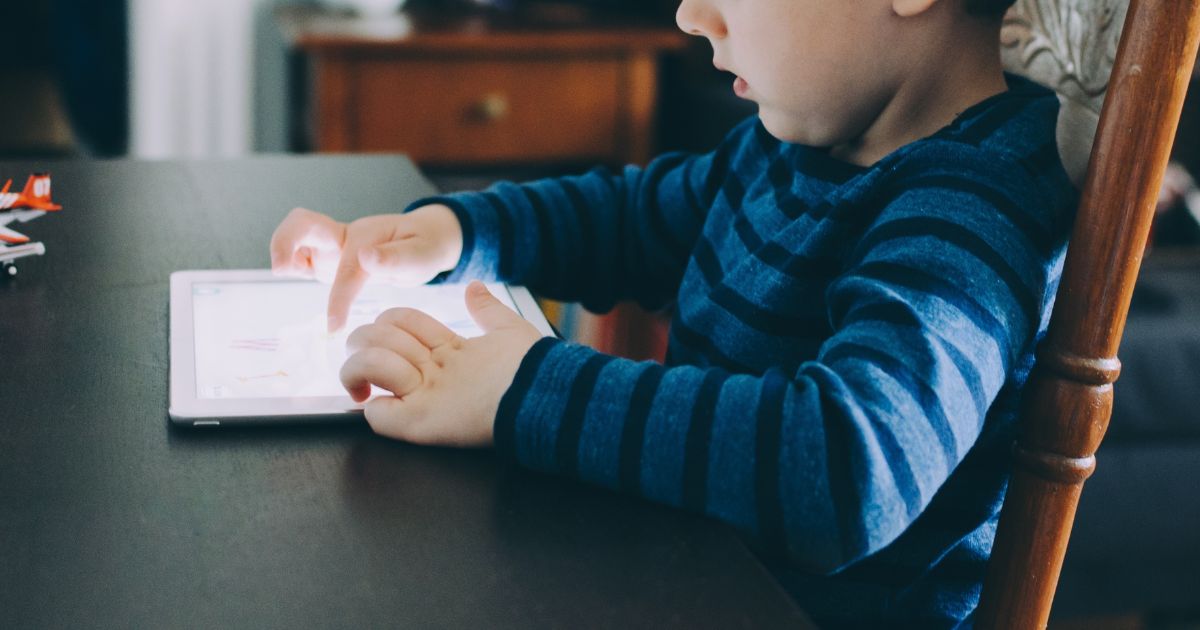
Features that Set Amazon FreeTime Unlimited Apart – Kids Tablet:
1. Diverse Content Categories:
The platform spans diverse content categories, from educational apps and interactive games to e-books and videos. Also this diversity ensures that children have access to a well – rounded digital experience that combines entertainment with learning.
2. Ad-Free Environment:
Amazon FreeTime Unlimited provides an ad – free environment, eliminating potential exposure to unsuitable advertising content. Also this feature contributes to a safe and distraction – free space for children to explore and enjoy digital content.
3. Individual Profiles for Each Child:
The platform allows parents to create individual profiles for each child, tailoring the content recommendations based on their age and interests. So this personalized approach ensures that each child’s digital journey is uniquely curated to meet their needs.
Utilizing Parental Controls in Amazon FreeTime Unlimited – Kids Tablet:
1. Time Management Tools:
Parents can set daily screen time limits, encouraging a healthy balance between digital engagement and other activities. Also time management tools empower parents to guide their children in establishing responsible digital habits.
2. Content Access Controls:
Amazon FreeTime Unlimited’s parents controls extend to content access. Also parents can customize which apps, games, and videos are accessible to their child, ensuring a controlled and safe digital environment.
3. Educational Goals and Progress Monitoring:
Parents can set educational goals for their children, and the platform provides tools to monitor progress. This feature not only aligns digital engagement with learning objectives but also allows parents to actively track their child’s educational milestones.
Read also – Consequences of teenage pregnancy – Excellent to know
Real-Life Impact: Case Studies and Testimonials – Kids Tablet:
1. Testimonials from Parents:
Parents sharing their experiences really show how Amazon FreeTime Unlimited makes a good impact on their kids’ digital time. Also these stories often point out how the platform helps kids enjoy learning, makes a safe online space, and eases parents’ worries.
2. Educational Success Stories:
Case studies look into success stories in education, showing how kids have gained from the educational stuff on Amazon FreeTime Unlimited. So these stories highlight how the platform helps with regular learning and encourages a love for learning.
Navigating the Digital Landscape – Kids Tablet:
Amazon FreeTime Unlimited is like a smart way to handle the digital world with kids. It brings together lots of different content and strong parents controls. Also this means parents can take charge and keep an eye on how their kids use digital stuff.
Kid-Friendly Interface:
The Fire HD Kids Edition has a kid – friendly interface that’s easy for children to use. So it has big icons and simple ways to move around, making it good for younger users.
In the always – changing digital world, a Kid-Friendly Interface is a big part of kids’ tech. It’s a simple and fun platform for young users. Also this exploration looks into why a Kid-Friendly Interface is important, explaining its features and benefits. So it shows how it actively helps kids easily and happily explore the digital world.
The Essence of a Kid-Friendly Interface – Kids Tablet:
1. Intuitive Design for Young Minds:
A Kid-Friendly Interface is known for its simple and easy – to – use design, crafted to suit the unique cognitive abilities and developmental stages of young minds. So it focuses on simplicity, making sure that children can navigate digital platforms without much difficulty or assistance.
2. Visual Appeal and Playful Elements:
More than just working well, a Kid-Friendly Interface looks good and is playful. So it uses bright colors, fun pictures, and icons you can tap on to create a visually interesting space. Also this catches the eye and imagination of young users.
Features Enriching the Kid-Friendly Experience – Kids Tablet:
1. Large Icons and Simple Navigation:
A big part of a Kid-Friendly Interface is having big icons and easy menus to move around. So these things make it easier for kids to find and start their favorite apps, games, or educational stuff without any trouble.
2. Age-Appropriate Content Curation:
The interface carefully picks content that’s right for a child’s age. Also this means kids get activities and apps that match where they are in their growth. Picking content this way makes sure kids don’t accidentally come across things that aren’t suitable for them.
3. Interactive Feedback and Rewards:
Incorporating interactive feedback and rewards is a common strategy in Kid-Friendly Interfaces. So positive reinforcement through visual cues or sound effects enhances the user experience, encouraging children to explore and engage with the digital platform.
Design Principles Guiding Kid-Friendly Interfaces – Kids Tablet:
1. Simplicity and Consistency:
Kid-Friendly Interfaces keep things simple and the same. Also the design isn’t complicated, and using the same way to move around in different apps makes things feel familiar for young users.
2. Customization for Individual Preferences:
Certain Kid-Friendly Interfaces let parents change things based on what their child likes. So this could mean picking themes, arranging icons, or choosing colors, adding a personal touch to how the digital world looks.
3. Safety Features and Parental Controls Integration:
Safety features and working with parents controls are really important in Kid-Friendly Interfaces. Also these things help parents keep an eye on and control what their child does online, making sure it’s a safe and managed digital space.
Real-Life Impact: Case Studies and Testimonials – Kids Tablet:
1. Testimonials from Parents:
Parents sharing their experiences really show how Kid-Friendly Interfaces make a difference. So these stories often point out how these interfaces help kids explore on their own, reduce frustration, and make technology something positive for young users.
2. Educational Success Stories:
Case studies look into success stories in education, showing how kids have enjoyed learning through Kid-Friendly Interfaces. Also these stories highlight how the simple design and fun parts help encourage a love for educational stuff.
Read also – Digital Harmony: Navigating Parenthood in the Tech Age
Navigating the Digital Learning Landscape – Kids Tablet:
A Kid-Friendly Interface isn’t just about how it looks but also a tool that helps kids move around in the digital learning world. So by keeping things simple, showing age – appropriate stuff, and having things to tap on, these interfaces become a way for kids to have fun and learn online.
Educational Content:
Alongside entertainment, Amazon puts a focus on educational content in the FreeTime Unlimited subscription. This lets parents pick out a bunch of educational apps and books.
Educational Content is a big part of how kids do things online, giving them a way to learn that’s interactive and enriching. Also this exploration looks into why Educational Content matters, explaining what it does and the good things it brings. So it shows how it actively helps kids love learning in the digital world.
The Essence of Educational Content:
1. Purposeful Learning Experiences:
Educational Content is designed to go beyond mere entertainment, providing purposeful learning experiences. So it encompasses a diverse range of materials, including interactive apps, e-books, games, and videos, curated to align with educational objectives.
2. Alignment with Curriculum and Standards:
Good Educational Content matches up with what kids are learning in school. So this means the stuff kids do online helps with what they’re learning in class, making sure they really understand important ideas and skills.
Features Elevating Educational Content – Kids Tablet:
1. Engaging Interactivity:
Educational Content is at its best when it’s interactive and fun. Also this means using learning apps that feel like games, quizzes where you can join in, or simulations that make learning exciting and easy to remember.
2. Adaptability to Individual Learning Styles:
Good Educational Content knows that everyone learns in different ways. Also it changes to fit what each person likes, offering different ways for people who like to see things, hear things, or do things to learn. So this makes learning personal and unique for each person.

3. Progress Tracking and Assessments:
A lot of platforms that have Educational Content also let you keep track of progress and do assessments. So this helps parents and teachers see how a child is doing, figure out what they’re good at and where they can do better, and plan future learning based on that.
Read also – Digital parenting – All you need to know – Simple Tips for working parents
Comprehensive Educational Content Ecosystem:
1. Multidisciplinary Learning Resources:
A good Educational Content setup covers a bunch of different subjects and skills. Also it goes from things like math and language arts to science, coding, and critical thinking. So this makes sure learning covers a lot of different areas.
2. Rich Media Formats:
Educational Content makes learning interesting by using different types of media. So this could be animated videos, interactive simulations, or virtual reality experiences. Also these things create a lively and absorbing space for learning.
3. Real-World Application:
The best Educational Content goes beyond theoretical concepts, incorporating real – world applications. So this bridges the gap between classroom learning and practical knowledge, helping children understand the relevance of what they learn to their everyday lives.
Real-Life Impact: Case Studies and Testimonials – Kids Tablet:
1. Parental Testimonials:
Parent testimonials highlight the real – life impact of Educational Content on their kids learning journeys. Also these stories often underscore how digital learning materials have sparked curiosity, accelerated understanding, and nurtured a genuine passion for specific subjects.
2. Educational Milestones:
Case studies look into important steps in education that happened because of Educational Content. These stories highlight times when digital learning really helped with academic success, showing the real benefits of using technology in education.
Shaping the Future of Digital Education – Kids Tablet:
Educational Content is a big part of the future of digital education. So it gives kids creative and interactive ways to learn, getting them ready for the changing needs of the digital world. Also this helps them learn the skills and knowledge they’ll need for whatever they do in the future.
Two Models:
Amazon typically offers different sizes of the Kids Edition tablets. So be sure to choose the size that fits your kids needs and preferences.
In education, there are two different ways of doing things, each with its own way of learning. This overview looks into what makes these models different, what’s good about each, and what to think about when it comes to traditional and digital approaches in education for students of all ages.
Traditional Learning Model – Kids Tablet:
1. Classroom-Centric Approach:
The traditional learning model centers around physical classrooms, where students gather under the guidance of teachers. Also face – to – face interactions foster a direct exchange of information and enable immediate clarification of doubts.
2. Printed Materials and Textbooks:
Traditional learning uses a lot of printed materials and text books. Also these things are like the main references, giving a physical and organized way to share educational stuff.
3. Teacher-Led Instruction:
In the traditional way of learning, teachers are really important. So they give lectures, lead discussions, and offer hands – on help. This approach focuses on the idea that having a mentor, like a teacher, is crucial in learning.
4. Structured Curriculum:
Traditional education sticks to a planned curriculum, usually set by educational boards or institutions. Also this plan says what topics to cover and what things to learn, making sure education follows a standardized way.
Digital Learning Model – Kids Tablet:
1. Technology-Integrated Classrooms:
The digital learning model incorporates technology into the classroom environment. Also interactive whiteboards, tablets, and online resources become integral tools, creating a tech – infused learning space.
2. Digital Resources and E-Learning Platforms:
Digital learning uses a bunch of online stuff and e – learning platforms. So this includes interactive lessons, multimedia presentations, and tools that help people work together, making learning more interesting and available.
Read also – Math Playground – Excellent Games for Kids
3. Student-Centric Engagement:
In the digital learning model, students often take a more active role in their education. Also interactive content, self – paced learning modules, and collaborative projects empower students to engage with educational materials in a personalized manner.
4. Flexible Learning Paths:
Digital learning lets students learn in different ways, so they can go at their own speed. So technologies that adapt to each kid needs give extra help or more challenging stuff depending on how well a student understands things.
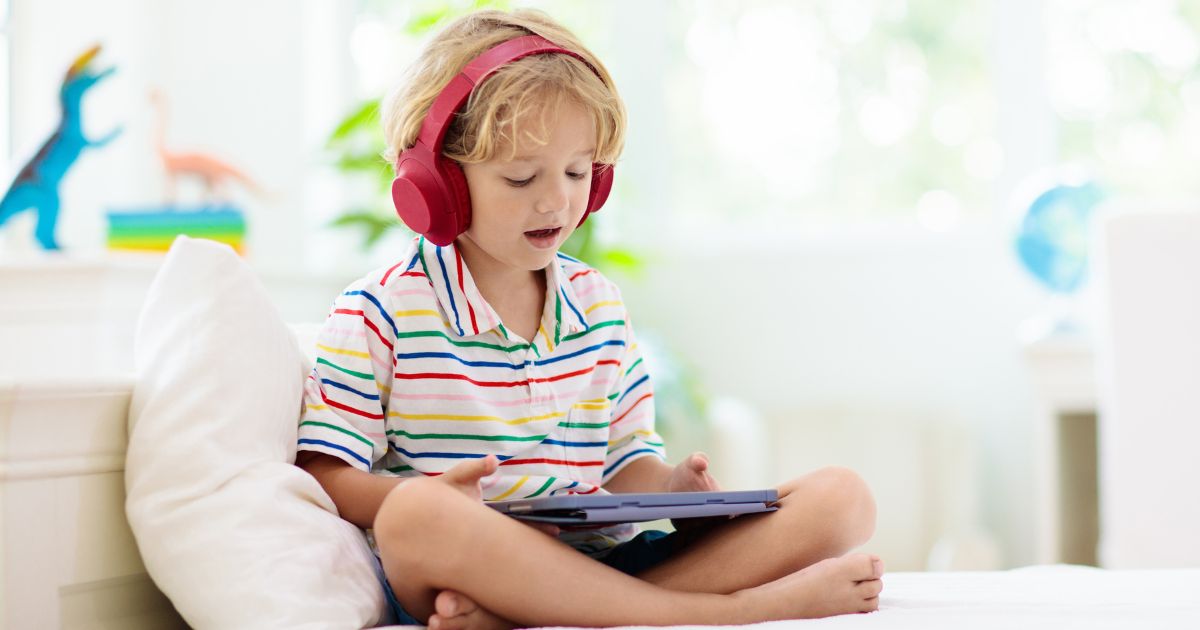
Considerations for Choosing a Model – Kids Tablet:
1. Learning Styles and Preferences:
Consider the learning styles and preferences of students. Some may thrive in a traditional setting with face – to – face interactions, while others may benefit from the flexibility and interactivity of digital learning.
2. Resource Accessibility:
Assess the availability of resources. Traditional learning may require physical text books and materials, while digital learning relies on access to technology and the internet. Also consider the resources accessible to students in both scenarios.
3. Educational Goals:
Choose the learning model that matches the goals you have for education. Traditional learning might be good for social interactions and classroom stuff, while digital learning could be more about getting comfortable with technology and learning skills needed in the 21st century.
Real-Life Implementation – Kids Tablet:
1. Hybrid Models:
Many educational institutions adopt hybrid models that blend aspects of both traditional and digital learning. So this approach seeks to harness the benefits of face – to – face interactions and technological advancements.
2. Adaptive Learning Platforms:
Adaptive learning platforms are becoming more popular in digital education. Also these platforms use data and analytics to customize content for each student, giving specific help or challenges based on what a student needs.
Apple iPad (8th generation) with Kid-Friendly Cases:
iPads are flexible devices, and with a strong case, they can work well for kids. In the iOS settings, there are parental controls that let you limit certain features and content.
The iPad (8th generation) is a full – sized tablet from Apple that offers a range of features suitable for various users, including children. So here are some details about the iPad (8th generation) with a focus on its potential use for kids:
iOS Parental Controls – Kids Tablet:
The iPad runs on Apple’s iOS operating system, which includes robust parents controls. So parents can set up restrictions on content, apps, and features through the Settings app. So this allows you to control what your child can access, set screen time limits, and prevent in – app purchases.
In the ever – changing world of digital parenting, iOS Parental Controls are a strong tool. Also they give parents the ability to handle and personalize their kids’ digital experiences in the Apple world. So this overview looks into why iOS Parental Controls matter, explaining what they do and the good things they bring. It shows how they actively help create a safe and balanced digital space for young users of Apple devices.
The Essence of iOS Parental Controls:
1. Digital Safety and Supervision:
iOS Parental Controls are designed to prioritize digital safety and supervision. Also they empower parents to actively oversee and manage their child’s interaction with Apple devices, ensuring age – appropriate content and usage.
2. Holistic Management Across Devices:
A distinctive feature of iOS Parental Controls is their ability to offer holistic management across various Apple devices. Whether it’s an iPhone, iPad, or iPod Touch, parents can extend their supervision seamlessly.
Key Features Elevating iOS Parental Controls – Kids Tablet:
1. Screen Time Management:
A key feature is managing screen time. Parents can set limits for each day or week, plan breaks from screen use, and decide on times when certain apps or features can be used.
2. App and Content Restrictions:
iOS Parental Controls allow for granular control over app usage and content access. So parents can restrict or allow specific apps, games, and media content based on their child’s age and maturity level.
3. Age-Appropriate Content Filters:
Content filters play a crucial role in iOS Parental Controls, ensuring that children are exposed only to age – appropriate material. Also these filters extend across Safari, the App Store, and other Apple services.
4. Family Sharing and Purchase Controls:
The Family Sharing feature enables parents to set up shared Apple IDs for their family members. So with purchase controls, parents can approve or decline app downloads and in – app purchases initiated by their children.
Seamless Integration with Apple Services – Kids Tablet:
1. iTunes and App Store Controls:
iOS Parental Controls work smoothly with iTunes and the App Store. Also parents can control access to explicit content, filter age ratings, and stop unauthorized purchases.
2. iCloud and Location Sharing:
For added security, iCloud settings and location sharing can be managed through iOS Parental Controls. So parents have the ability to control location sharing and ensure that sensitive information remains protected.
3. Privacy Settings and App Permissions:
Parents can manage privacy settings and app permissions, controlling the information shared by their child’s device. Also this includes permissions for contacts, location data, and other sensitive information.
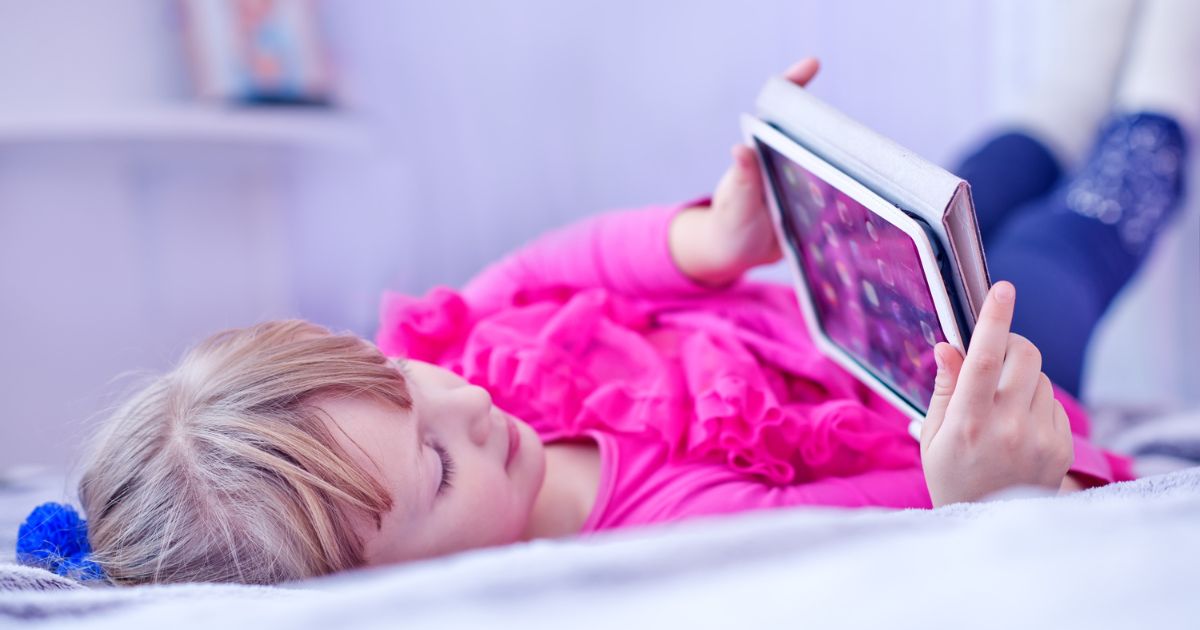
Real-Life Impact: Case Studies and Testimonials – Kids Tablet:
1. Testimonials from Parents:
Parent testimonials underscore the real – life impact of iOS Parental Controls. So stories often highlight how these controls have facilitated healthy digital habits, minimized screen time conflicts, and fostered open conversations about responsible device use.
2. Digital Well-being Success Stories:
Case studies delve into digital well – being success stories, showcasing instances where iOS Parental Controls have contributed to a positive and balanced relationship between children and their Apple devices.
Navigating the Apple Ecosystem:
iOS Parental Controls play a big role in helping navigate the Apple world. They make sure kids get the good things from technology while being protected from possible risks. Also as Apple devices become a big part of everyday life, these controls provide a complete solution for digital parenting.
App Store and Educational Apps – Kids Tablet:
The App Store on the iPad provides access to a vast library of educational apps, games, and content suitable for children of different ages. You can curate a collection of apps that align with your child’s educational needs and interests.
In the wide world of mobile technology, the App Store is like a door to a bunch of apps. So within this digital marketplace, Educational Apps are really important for shaping learning experiences, no matter the age. Also this overview looks into why the App Store matters and what’s good about the educational apps it has. It explains what these apps do and how they actively help with learning in the digital age.
The Essence of the App Store – Kids Tablet:
1. Digital Marketplace for Diverse Apps:
The App Store serves as a digital marketplace, hosting a diverse array of applications catering to various needs and interests. Also from productivity tools to entertainment and education, the App Store is a one – stop – shop for mobile applications.
2. Accessibility Across Apple Devices:
A key thing about the App Store is that it works on a bunch of Apple devices, like iPhones, iPads, and iPod Touch. So this means users can easily check out and download apps on the device they like best.
Educational Apps: A Cornerstone of Learning:
1. Interactive Learning Experiences:
Educational Apps change learning into interactive experiences. Also they use game – like lessons, quizzes, and fun activities to grab learners’ attention, making education enjoyable and effective.
2. Adaptive and Personalized Learning:
Lots of educational apps use adaptive learning technologies, changing content based on each person’s progress. So this personalization helps each learner go at their own speed, improving how well they understand and remember things.
3. Multidisciplinary Content:
Educational apps cover a broad spectrum of subjects and skills, ranging from mathematics and language arts to science, coding, and critical thinking. Also this multidisciplinary approach ensures a well – rounded educational experience.
Features Elevating Educational Apps – Kids Tablet:
1. Engaging Multimedia Content:
Educational apps include interesting multimedia content like videos, animations, and interactive simulations. So this kind of rich media makes it easier to understand things and creates an exciting learning space.
2. Real-Time Feedback and Progress Tracking:
Educational apps often have feedback and progress tracking. Also learners get quick feedback on quizzes and activities, and parents or teachers can check how things are going over time.
3. Offline Accessibility:
Certain educational apps let you use them without always being connected to the internet. This is handy, especially for users in places where the internet connection might not be so good.
App Store’s Role in Curating Educational Content – Kids Tablet:
1. Age-Appropriate Content Filters:
The App Store uses filters to make sure educational apps are right for a certain age. So this means kids only see stuff that’s good for their age and adds an extra layer of safety for parents.
2. Curated Collections and Recommendations:
The App Store puts together groups of educational apps and gives suggestions based on what users like. Also this organized approach makes it easier to find really good educational stuff.
3. Parental Controls and In-App Purchases:
The App Store has parental controls, letting parents handle and limit in – app purchases. So these controls help make sure young users are in a secure and managed digital space.
Real-Life Impact: Case Studies and Testimonials – Kids Tablet:
1. Educational Milestones:
Case studies tell stories about how educational apps really make a difference in learners’ education. These stories show times when educational apps have been super important in doing well in school, learning new skills, and making learning something enjoyable.
2. Parent and Teacher Testimonials:
Parents and teachers sharing their thoughts give a good look at how educational apps make a positive difference. Also these stories often point out how these apps have become important tools in helping with regular teaching methods and making learning even better.
Navigating the Digital Learning Landscape – Kids Tablet:
The App Store, with all its educational apps, is like a map for going through digital learning. So it makes it easy to find new tools that work well with regular ways of learning, giving users lots of resources to keep on learning.
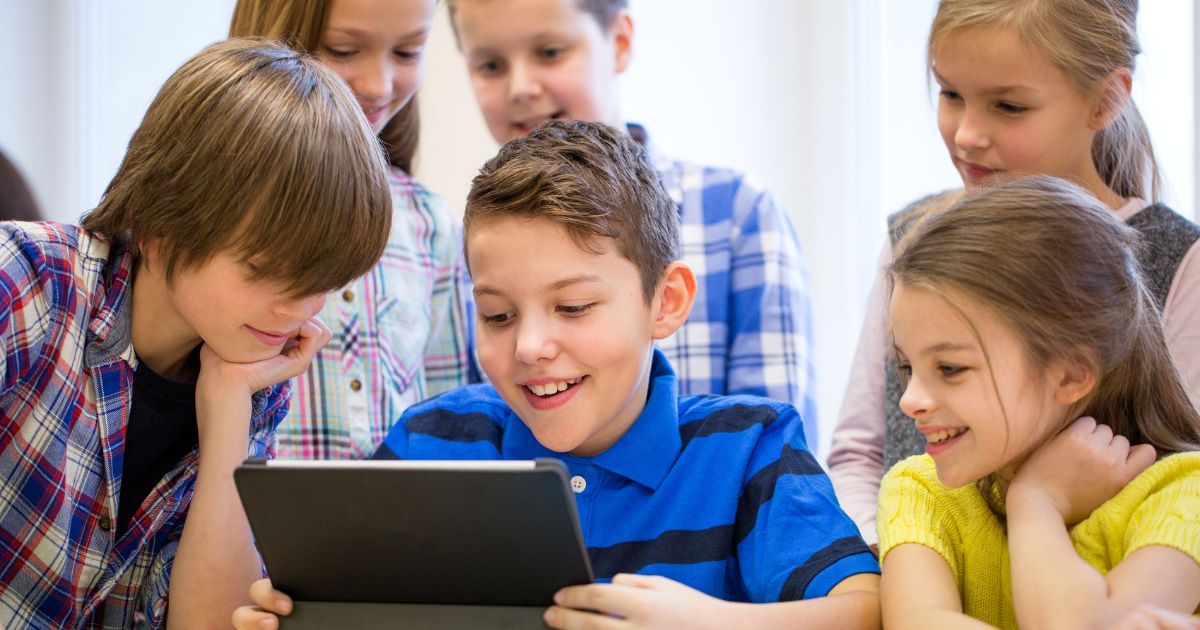
Durable Kid-Friendly Cases:
Various third – party manufacturers produce kid – friendly cases designed specifically for iPads. So these cases are often shock – absorbent and provide additional protection against drops and accidents. Also look for cases with handles or stands for easier handling by children.
In the ever – changing world of parenting in the digital age, the importance of Durable Kid-Friendly Cases is really big. Also these protective accessories are made to keep electronic devices safe from the unpredictable journeys of young adventurers. This overview looks into what makes durable kid – friendly cases important, explaining what they do and the crucial role they play in making sure kids’ devices last a long time.
The Essence of Durable Kid-Friendly Cases – Kids Tablet:
1. Protection Against Drops and Impact:
Durable kid – friendly cases are engineered to provide robust protection against drops, impacts, and everyday mishaps. So their rugged design acts as a shield, minimizing the risk of damage to the delicate internals of electronic devices.
2. Kid-Proofing Devices for Active Lifestyles:
These cases serve as a form of kid – proofing, acknowledging the active and sometimes unpredictable lifestyles of young users. Whether it’s accidental drops, spills, or rough handling, durable cases act as a first line of defense for valuable devices.
Features Enhancing Durability:
1. Shock-Absorbing Materials:
Durable kid – friendly cases often incorporate shock – absorbing materials such as silicone or rubber. These materials absorb and disperse the impact energy, reducing the force transferred to the device during accidental drops.
2. Reinforced Corners and Edges:
Reinforced corners and edges are common design elements in these cases. These strategic reinforcements add an extra layer of protection to areas most susceptible to impact, minimizing the vulnerability of devices in case of falls.
3. Raised Bezels for Screen and Camera Protection:
Many cases feature raised bezels around the screen and camera areas. This design prevents direct contact with surfaces when the device is laid flat, safeguarding the screen and camera lens from scratches and potential damage.
Design Elements for Kid-Friendly Appeal – Kids Tablet:
1. Vibrant Colors and Designs:
Durable kid – friendly cases often come in vibrant colors and playful designs. This not only adds a touch of personalization for young users but also enhances the visual appeal, making the cases more attractive to children.
2. Grip-Friendly Texture:
The texture of these cases is designed to be grip – friendly. Sohis ensures that children can securely hold their devices, reducing the likelihood of accidental slips and drops.
3. Easy Access to Ports and Buttons:
Thoughtful design includes easy access to device ports and buttons. Also kid – friendly cases maintain functionality, allowing young users to plug in headphones, charge devices, and operate buttons without hindrance.
Real-Life Impact: Case Studies and Testimonials – Kids Tablet:
1. Parental Testimonials:
Parent testimonials shed light on the real-life impact of durable kid-friendly cases. So these stories often highlight instances where these cases have successfully protected devices from accidental damage, extending the lifespan of valuable technology.
2. Adventures in Learning and Play:
Case studies explore how durable cases have facilitated adventures in learning and play. Whether in the classroom, during outdoor activities, or at home, these cases provide the confidence for parents to allow their children to explore and engage with technology.
Navigating the Digital Landscape with Confidence – Kids Tablet:
Durable kid – friendly cases empower parents to navigate the digital landscape with confidence, knowing that their children’s devices are protected from the inevitable bumps and tumbles that come with youthful exploration.
Size and Display Quality:
The iPad (8th generation) has a 10.2-inch Retina display, providing a high – quality visual experience for educational content, videos, and games. So the size of the display can contribute to a more immersive learning experience.
In the world of electronic devices, the tandem of Size and Display Quality holds a pivotal role in shaping the user experience. Also this exploration delves into the significance of Size and Display Quality, unraveling their interplay, features, and the profound impact they have on crafting optimal visual experiences in devices.
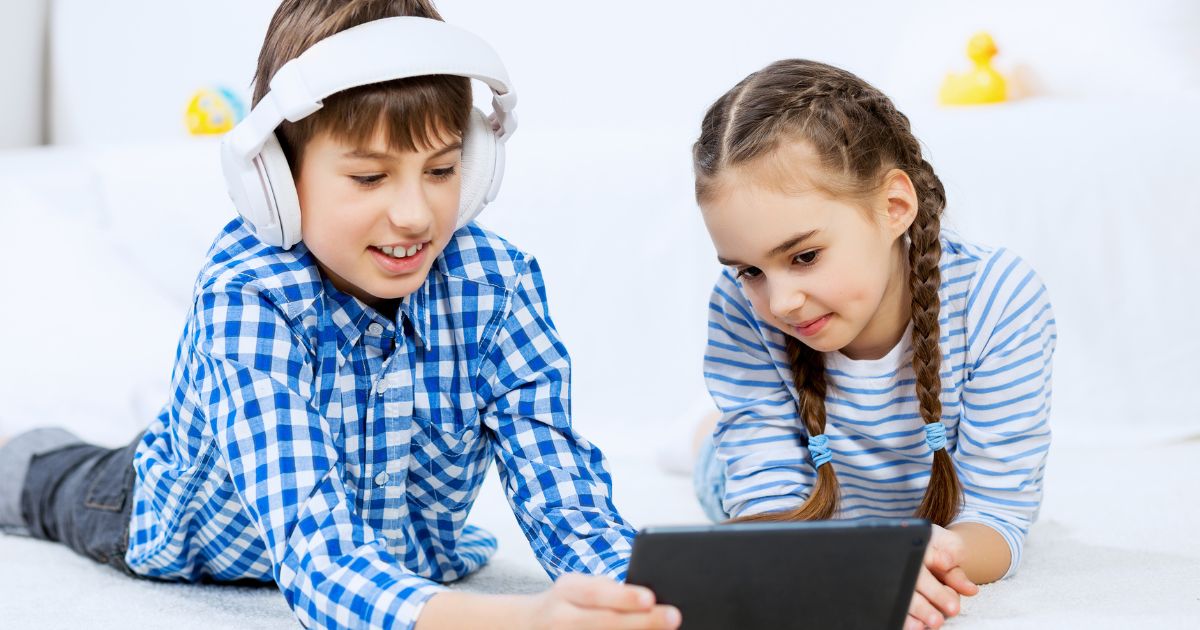
The Essence of Size and Display Quality – Kids Tablet:
1. Size: Balancing Form and Functionality:
The size of a device is a critical aspect that balances form and functionality. So it determines the device’s portability, ease of use, and the immersive nature of visual content. Also striking the right size is essential for meeting the diverse needs and preferences of users.
2. Display Quality: Window to Visual Brilliance:
Display quality is the window to visual brilliance. It encompasses factors such as resolution, color accuracy, and brightness, defining the clarity and vibrancy of on – screen content. A high-quality display enhances the overall user experience and engagement.
Size: Beyond Dimensions:
1. Portability vs. Screen Real Estate:
The size of a device is a delicate balance between portability and screen real estate. Smaller sizes enhance portability, catering to users on the go, while larger sizes offer ample screen space for immersive content consumption and productivity.
2. Ergonomics and Comfort:
Size influences ergonomics and comfort. The design of a device should consider how users interact with it, ensuring that the size contributes to a comfortable and intuitive user experience, whether in handheld, laptop, or desktop form factors.
3. Multifunctional Displays:
The trend of multifunctional displays allows devices to dynamically adjust size based on user needs. Foldable and flexible displays, for example, provide the versatility to transition between compact portability and expanded screen real estate.
Display Quality: Elevating Visual Experiences – Kids Tablet:
1. Resolution and Pixel Density:
Display quality is often measured by resolution and pixel density. Higher resolutions, such as Full HD or 4K, coupled with increased pixel density, contribute to sharper and more detailed visuals, enhancing the viewing experience.
2. Color Accuracy and Vibrancy:
A high – quality display ensures color accuracy and vibrancy. Accurate color reproduction and vibrant hues contribute to lifelike visuals, crucial for applications such as photo and video editing, gaming, and content consumption.
3. Brightness and Contrast:
Brightness and contrast levels impact visibility in various lighting conditions. So a display with high brightness and contrast ratios ensures clarity in bright environments and enhances the depth of dark scenes for an immersive viewing experience.
Real-Life Impact: User Testimonials and Case Studies – Kids Tablet:
1. User Testimonials on Size:
User testimonials highlight the real – life impact of size on their device usage. Stories often emphasize how the right size contributes to comfort during extended use or how a compact size enhances portability for on – the – go lifestyles.
Read also – Parental advisory – Excellent Tips you need to know
2. Case Studies on Display Quality:
Case studies delve into the impact of display quality on user satisfaction. So these narratives often showcase instances where devices with high – quality displays have elevated user experiences, leading to increased productivity and enjoyment.
Navigating the Digital Landscape:
Size and Display Quality collectively serve as navigational tools in the digital landscape. Also users choose devices based on their visual preferences, ergonomic needs, and the specific tasks they intend to perform.
Compatibility with Apple Pencil (1st generation) – Kids Tablet:
If you’re interested in enhancing your child’s creativity and note – taking abilities, the iPad (8th generation) is compatible with the Apple Pencil (1st generation). So this stylus can be used for drawing, writing, and interacting with various apps.
The compatibility with Apple Pencil (1st Generation) is a transformative feature that enhances the creative capabilities of Apple devices. So this exploration delves into the significance of compatibility with the first-generation Apple Pencil, unraveling its features, benefits, and the profound impact it has on unleashing creative potential for users across various Apple platforms.
The Essence of Apple Pencil (1st Generation) Compatibility – Kids Tablet:
1. Precision and Sensitivity:
Compatibility with the first – generation Apple Pencil brings unparalleled precision and sensitivity to the user experience. Also the device responds to subtle pressure and tilt variations, allowing for precise control and artistic expression in various applications.
2. Seamless Integration:
The seamless integration of the first-generation Apple Pencil is a testament to Apple’s commitment to creating a unified ecosystem. Also the pencil pairs effortlessly with compatible devices, ensuring a smooth transition between tasks and applications.
Key Features Elevating Apple Pencil Compatibility – Kids Tablet:
1. Palm Rejection Technology:
Palm rejection technology is a standout feature, ensuring that the device recognizes the Apple Pencil input while ignoring unintended touches from the user’s palm. So this enhances the natural and intuitive feel of the writing or drawing experience.
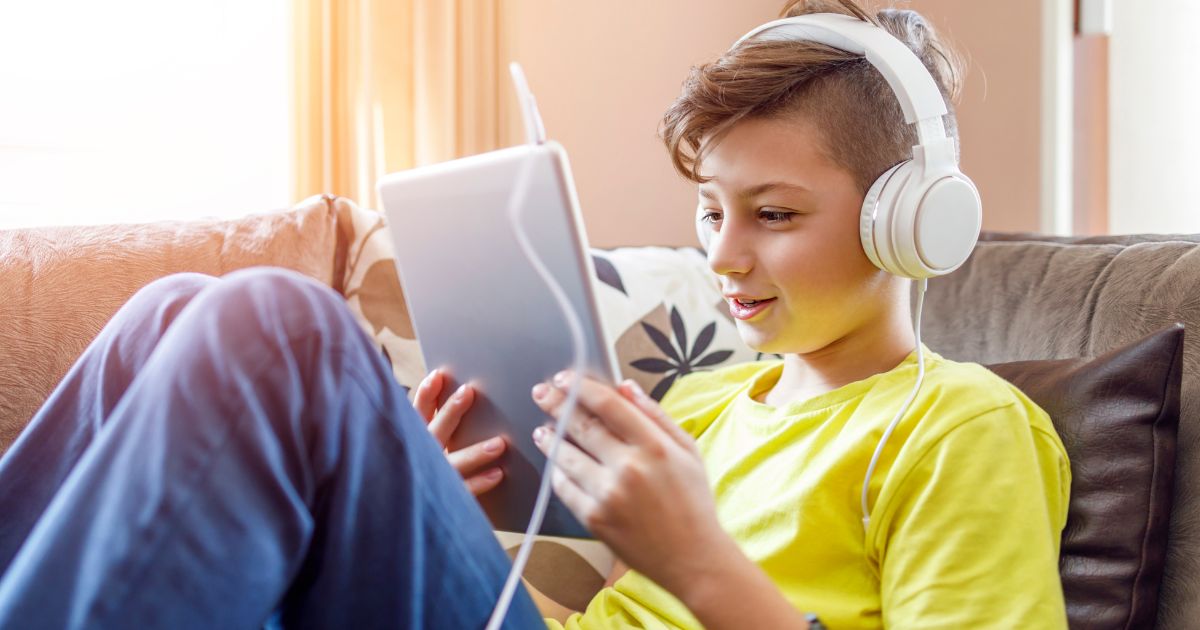
2. Tilt and Pressure Sensitivity:
Tilt and pressure sensitivity are key components that contribute to a dynamic and expressive creative process. Also users can vary line thickness and shading by adjusting the angle and pressure applied to the Apple Pencil, providing a nuanced and versatile tool for artistic endeavors.
3. Low Latency for Real-Time Responsiveness:
Low latency is crucial for real-time responsiveness. The first – generation Apple Pencil, when paired with compatible devices, minimizes latency, ensuring that strokes and inputs appear on the screen with almost imperceptible delay, creating a fluid and natural interaction.
Compatible Devices and Applications – Kids Tablet:
1. iPad Models with Apple Pencil Support:
Compatibility extends to various iPad models that support the first-generation Apple Pencil. So this includes select iPad Pro models, iPad Air (3rd generation), iPad (6th and 7th generation), and iPad mini (5th generation).
2. Creative Applications:
A plethora of creative applications takes full advantage of Apple Pencil compatibility. Also from drawing and sketching apps to note – taking and design tools, users can explore a diverse range of applications that harness the capabilities of the first – generation Apple Pencil.
Real-Life Impact: Creative Endeavors and Productivity:
1. User Stories of Artistic Expression:
User stories highlight the real – life impact of Apple Pencil compatibility on artistic expression. Whether it’s digital art, illustrations, or graphic design, users share how the first-generation Apple Pencil has become an indispensable tool for bringing their creative visions to life.
2. Enhanced Productivity in Note-Taking:
Case studies delve into how compatibility with the Apple Pencil enhances productivity, especially in note-taking scenarios. Also users share how the natural feel of writing and drawing with the Apple Pencil transforms digital note – taking into an intuitive and efficient process.
Navigating the Creative Landscape – Kids Tablet:
Compatibility with the first – generation Apple Pencil is a beacon for users navigating the creative landscape. So it transforms Apple devices into versatile canvases, empowering users to explore and express their creativity in new and exciting ways.
Family Sharing:
Apple’s Family Sharing feature allows you to share purchased apps, books, and other content with family members. This is convenient for managing and accessing content across multiple devices within the family.
Also in the ever – connected landscape of digital living, Family Sharing emerges as a transformative feature, fostering unity and collaboration within the Apple ecosystem. So this exploration delves into the significance of Family Sharing, unraveling its features, benefits, and the profound impact it has on creating a harmonious and collaborative digital environment for families.
The Essence of Family Sharing – Kids Tablet:
1. Unified Digital Ecosystem:
Family Sharing is designed to create a unified digital ecosystem for families. It allows members to share and access each other’s purchases, subscriptions, and content seamlessly, promoting a collaborative and shared experience.
2. Streamlined Management:
At its core, Family Sharing streamlines the management of digital assets within a family unit. So from apps and music to photos and calendars, this feature simplifies the sharing and organization of various digital resources.
Key Features Elevating Family Sharing – Kids Tablet:
1. Shared Purchases and Subscriptions:
Family members can share purchases from the App Store, iTunes, and Apple Books. Additionally, subscriptions such as Apple Music, Apple TV+, and Apple News+ can be shared among family members, optimizing cost – effectiveness.
2. Family Calendar and Reminders:
Family Sharing includes a shared family calendar and reminders, facilitating coordination of schedules and tasks. Also this collaborative approach ensures that everyone is on the same page, enhancing organization and communication within the family.
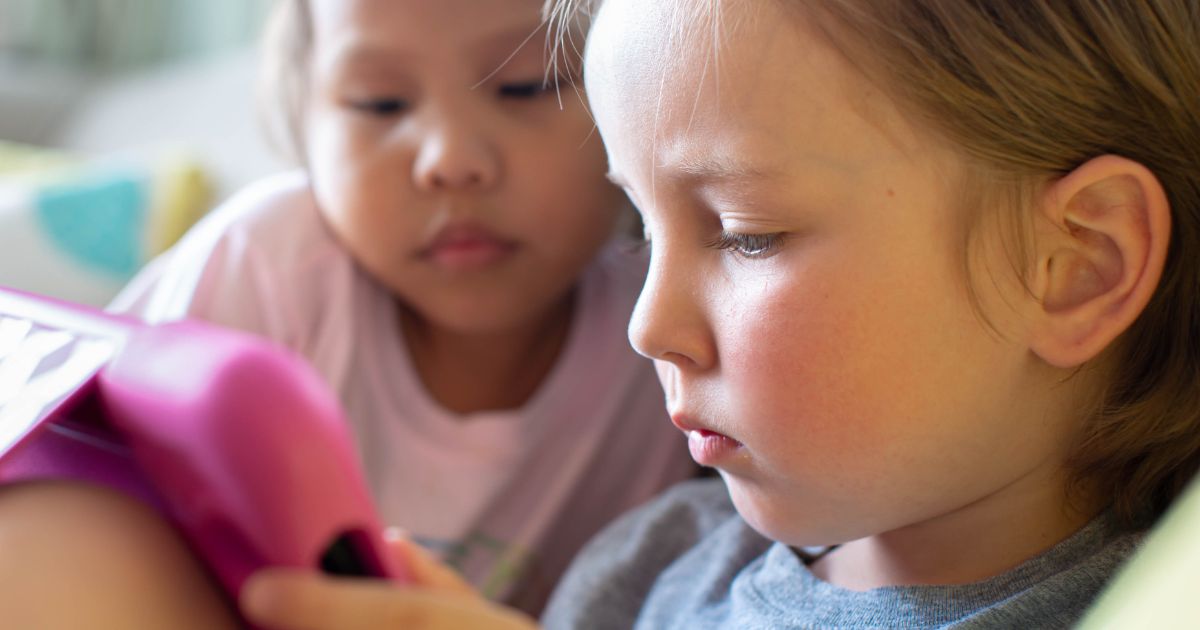
3. Location Sharing for Safety:
The location – sharing feature enhances safety and connectivity within the family. So parents can keep track of the location of family members, providing peace of mind and the ability to coordinate plans more effectively.
Practical Applications in Daily Life:
1. Shared Photo Albums:
Family Sharing allows for the creation of shared photo albums. Also members can contribute and access photos collectively, creating a digital family album that chronicles memories and experiences.
2. Collaborative Shopping Lists:
The shared Reminders app facilitates the creation of collaborative shopping lists. Family members can add items to the list in real-time, ensuring that everyone’s needs are considered during grocery shopping or other errands.
Real-Life Impact: User Testimonials and Case Studies – Kids Tablet:
1. User Stories on Financial Efficiency:
User testimonials highlight the real – life impact of Family Sharing on financial efficiency. So families share stories of how pooling resources for app purchases and subscriptions through Family Sharing has led to significant cost savings.
2. Case Studies on Digital Harmony:
Case studies delve into how Family Sharing contributes to digital harmony within families. Also these narratives showcase instances where shared calendars, reminders, and purchases have streamlined daily life and strengthened familial connections.
Navigating the Digital Family Landscape:
Family Sharing serves as a guiding force in navigating the complex landscape of digital family life. So it encourages collaboration, communication, and shared experiences, fostering a sense of unity in the digital realm.
It’s important to note that while the iPad can be a versatile device for children, the parental controls and content curation play a crucial role in creating a safe and educational environment.
Samsung Galaxy Tab A Kids Edition – Kids Tablet:
Samsung offers a kid – friendly version of its Galaxy Tab A, featuring a rugged case and a kid – friendly interface. It also includes parental controls.
The Samsung Galaxy Tab A Kids Edition is a variant of the standard Galaxy Tab A designed specifically for children. So here are some details about the Samsung Galaxy Tab A Kids Edition:
Kid-Friendly Interface:
The Galaxy Tab A Kids Edition typically comes with a kid – friendly interface that is easy for children to navigate. It often features large icons and a simplified layout to make it more intuitive for younger users.
So in the dynamic landscape of digital experiences for children, a Kid-Friendly Interface emerges as a guiding force, designed to nurture safe and engaging exploration. Also this exploration delves into the essence of a Kid-Friendly Interface, unraveling its features, benefits, and the pivotal role it plays in shaping a secure and enjoyable digital environment for young users.
The Essence of a Kid-Friendly Interface:
1. Tailored for Age-Appropriate Interaction:
A Kid-Friendly Interface is meticulously crafted to cater to age – appropriate interaction. So it considers the developmental stages and needs of young users, ensuring that the digital experience aligns with their abilities and interests.
2. Intuitive and User-Friendly Design:
The design of a Kid-Friendly Interface prioritizes intuitiveness and user – friendliness. Icons, navigation, and controls are simplified to make it easy for children to navigate independently, fostering a sense of autonomy in their digital exploration.
Key Features Elevating Kid-Friendly Interfaces – Kids Tablet:
1. Parental Controls and Customization:
Kid-Friendly Interfaces often include robust parental controls. Also parents can customize settings, control access to content, and monitor usage, empowering them to create a tailored and safe digital environment for their children.
2. Colorful and Engaging Visuals:
The visual elements of a Kid-Friendly Interface are characterized by vibrant colors and engaging visuals. So these elements captivate the attention of young users, making the digital experience visually appealing and stimulating.
3. Age-Appropriate Content Curation:
Curation of age-appropriate content is a fundamental aspect. Kid-Friendly Interfaces ensure that the available content – whether games, apps, or educational materials – is curated to align with the developmental stages and learning needs of children.
Safety and Security Measures:
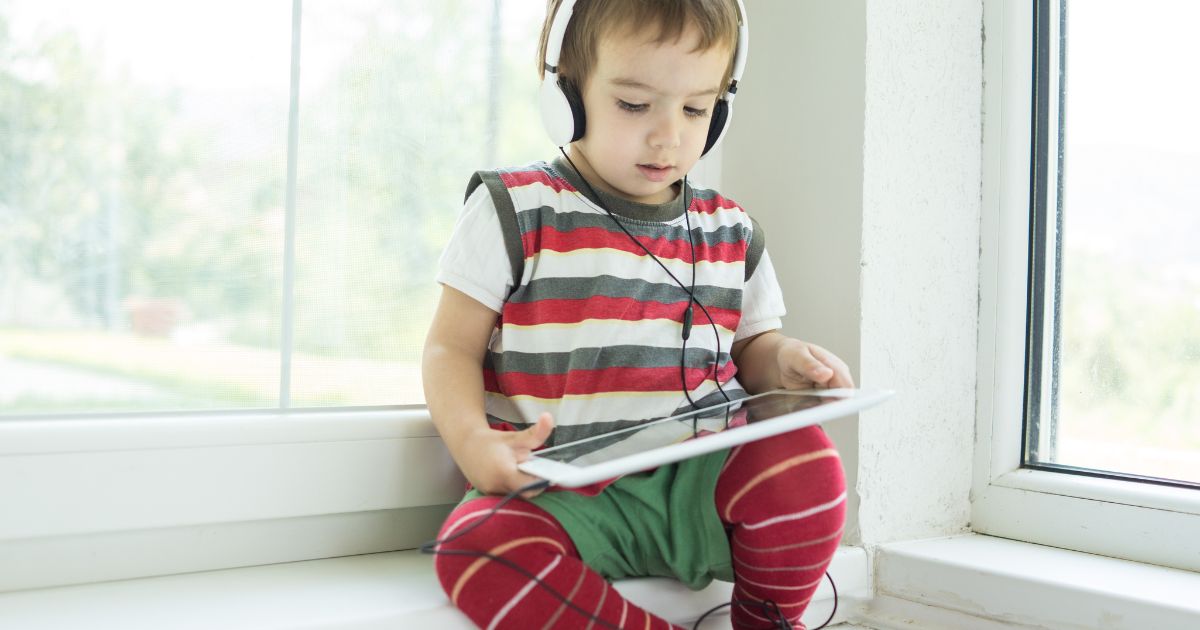
1. Restricted Access to External Content:
Kid-Friendly Interfaces often restrict access to external content that may not be suitable for children. Also this creates a controlled digital environment, minimizing exposure to potentially inappropriate material.
2. Child-Proof Features and Locks:
Child-proof features and locks add an extra layer of security. So these features prevent accidental exits from apps, unauthorized purchases, or access to settings that may disrupt the child’s digital experience.
Real-Life Impact: Parental Perspectives and Testimonials – Kids Tablet:
1. Parental Perspectives on Digital Safety:
Parental perspectives shed light on the real-life impact of Kid-Friendly Interfaces on digital safety. Also stories often highlight how these interfaces have provided parents with peace of mind, knowing that their children are navigating a secure digital space.
2. Testimonials on Independent Exploration:
User testimonials delve into the positive impact of Kid-Friendly Interfaces on independent exploration. So parents share stories of how their children have developed confidence and autonomy in using digital devices, thanks to interfaces tailored to their needs.
Navigating the Digital Learning Landscape:
Kid-Friendly Interfaces serve as guiding companions in navigating the digital learning landscape for young users. Also they facilitate a positive and controlled introduction to technology, paving the way for educational and entertaining digital experiences.
Educational Content – Kids Tablet:
Samsung aims to provide educational content for children through its Kids Mode. Also this can include age – appropriate apps, games, and interactive content that promotes learning and creativity.
In the realm of digital education, Samsung Devices stand as versatile platforms that go beyond standard functionality, offering a wealth of Educational Content to inspire and enrich learning journeys. So this exploration delves into the significance of Educational Content on Samsung Devices, unraveling its features, benefits, and the profound impact it has on fostering knowledge acquisition and skill development.
The Essence of Educational Content on Samsung Devices:
1. Diverse and Multifaceted Learning Resources:
Educational Content on Samsung Devices encompasses a diverse range of learning resources. Also from interactive lessons and e-books to educational apps and multimedia content, these devices serve as gateways to a wealth of educational materials.
2. Integration of Technology for Enhanced Learning:
Samsung Devices integrate technology seamlessly into the learning process. So the educational content is designed to leverage the capabilities of these devices, providing interactive and engaging learning experiences that go beyond traditional methods.
Key Features Elevating Educational Content on Samsung Devices:
1. Adaptive Learning Platforms:
Samsung Devices often host adaptive learning platforms. Also these platforms use data and analytics to tailor educational content to individual student needs, offering personalized learning paths that cater to diverse learning styles.
2. S Pen Integration for Interactive Learning:
The integration of the S Pen, a stylus designed for Samsung devices, enhances interactive learning experiences. So it allows users to write, draw, and interact with educational content directly on the screen, adding a hands – on dimension to the learning process.
3. Access to Online Courses and Educational Apps:
Educational Content on Samsung Devices includes access to online courses and a wide array of educational apps. Also users can explore subjects ranging from STEM (Science, Technology, Engineering, and Mathematics) to language arts, fostering a holistic and multidisciplinary approach to learning.
Real-Life Impact: Educational Milestones and Skill Development – Kids Tablet:
1. Success Stories in Academic Achievement:
Real – life impact stories highlight the role of Educational Content on Samsung Devices in academic achievement. So these stories showcase instances where students have excelled in their studies and achieved educational milestones with the aid of digital learning resources.
2. Skill Development and Practical Application:
Case studies delve into how Educational Content on Samsung Devices contributes to skill development. Whether it’s coding, language proficiency, or problem – solving skills, users share how the practical application of educational content enhances their abilities.
Navigating the Digital Learning Landscape:
Educational Content on Samsung Devices serves as a compass for navigating the digital learning landscape. Also it empowers users to access a diverse range of educational materials, adapt to individual learning needs, and engage with content in a manner that suits their preferences.
Parental Controls – Kids Tablet:
Robust parental controls typically accompany the tablet, empowering parents to set limits on screen time, restrict access to specific apps or content, and monitor their child’s usage. So this functionality enables parents to ensure that the device aligns with their preferences and is utilized in a manner they find suitable.
Durability:
Some versions of the Galaxy Tab A Kids Edition may come with a rugged case or cover designed to protect the tablet from accidental drops and spills. This can be especially important for younger children who might not be as careful with electronic devices.
Access to Samsung Kids:
Samsung Kids is a subscription service that often comes with the Galaxy Tab A Kids Edition. So it provides a library of kid-friendly content, including games, books, and videos. Also the content available through Samsung Kids is typically curated to be age-appropriate.
Parental Dashboard:
Some versions of the Kids Edition may include a parental dashboard or control panel, allowing parents to easily manage and monitor their child’s activities on the tablet.
Size and Display Quality:
The Galaxy Tab A Kids Edition usually features a display of varying sizes, and the quality of the display can contribute to a good viewing experience for educational content, videos, and games.
Also in the ever-evolving landscape of cutting – edge devices, the combination of Size and Display Quality emerges as a dynamic duo, redefining visual excellence and user experience. So this exploration delves into the significance of Size and Display Quality on modern devices, unraveling their features, benefits, and the profound impact they have on elevating visual content consumption and interaction.
The Essence of Size and Display Quality:
1. Size: Beyond Dimensions, Balancing Form and Functionality:
Size is more than just dimensions; it’s a delicate balance between form and functionality. Whether compact for portability or expansive for immersive experiences, the right size contributes to the device’s overall usability and aesthetic appeal.
2. Display Quality: Where Brilliance Meets Precision:
Display Quality is the meeting point where brilliance meets precision. It encompasses factors like resolution, color accuracy, and brightness, defining the clarity and vibrancy of on – screen content. Also high – quality displays ensure a visually immersive and enjoyable user experience.

Size: Tailoring Devices to User Preferences:
1. Portability vs. Immersive Content Consumption:
The size of a device tailors the user experience to specific preferences. Smaller sizes enhance portability, catering to users on the move, while larger sizes deliver expansive screens for immersive content consumption, gaming, and productivity.
2. Ergonomics and Seamless Interaction:
Size influences ergonomics, determining how users interact with devices. Also thoughtful design ensures that the size of a device complements the natural movements and comfort of users, fostering seamless and intuitive interaction.
3. Versatility with Foldable and Flexible Displays:
Foldable and flexible displays make devices versatile. Users can switch between small and big screens, showing how modern devices can adapt to different user needs.
Display Quality: Elevating Visual Experiences:
1. Resolution and Pixel Density: Precision in Every Pixel:
Display Quality is often measured by resolution and pixel density. Also higher resolutions and increased pixel density contribute to sharper, more detailed visuals, providing precision in every pixel for a visually stunning experience.
2. Color Accuracy and Vibrancy: A Spectrum of Brilliance:
A high-quality display ensures color accuracy and vibrancy. So accurate color reproduction and vibrant hues create a spectrum of brilliance, enhancing the lifelike and engaging nature of on – screen visuals.
3. Brightness and Contrast: Illuminating Clarity and Depth:
Brightness and contrast levels impact visibility and depth. A display with high brightness ensures clarity in various lighting conditions, while contrast ratios enhance the depth and richness of on-screen content.
Real-Life Impact: User Testimonials and Case Studies – Kids Tablet:
1. User Stories on Personalized Experiences:
User testimonials highlight the real – life impact of Size and Display Quality on personalized experiences. So users share stories of how the right size and exceptional display quality have contributed to enhanced personal enjoyment and productivity.
2. Case Studies on Visual Excellence:
Case studies delve into the impact of Size and Display Quality on visual excellence. Also these narratives showcase instances where modern devices have transformed the way users consume content, collaborate, and express creativity.
Navigating the Digital Landscape:
Size and Display Quality collectively serve as navigational tools in the digital landscape. So users choose devices based on their visual preferences, ergonomic needs, and the specific tasks they intend to perform.
Also it’s essential to check the specific features and specifications of the model currently available in the market, as product details and offerings may change over time.
LeapFrog LeapPad Academy – Kids Tablet:
Designed specifically for young children, the LeapPad Academy focuses on educational content and includes a shatter-safe screen. It’s suitable for kids aged 3-8.
The LeapFrog LeapPad Academy is a tablet specifically designed for children, with a focus on providing educational content in a fun and interactive way. So here are some details about the LeapPad Academy:
Educational Content:
LeapPad Academy is designed to offer a range of educational content for children, including interactive games, e-books, videos, and other learning activities. So the content is often aligned with educational standards and tailored to different age groups.
LeapPad Academy, with its innovative approach to early childhood education, is a beacon of educational content designed to inspire learning adventures for young minds. So this exploration delves into the significance of the educational content offered by LeapPad Academy, unraveling its features, benefits, and the profound impact it has on fostering a love for learning in the formative years.
The Essence of Educational Content on LeapPad Academy:
1. Child-Centric Learning Approach:
LeapPad Academy’s educational content revolves around a child-centric learning approach. Also tailored to the developmental stages of young learners, the content is designed to be engaging, interactive, and aligned with early educational milestones.
2. Multidisciplinary Curriculum:
The content on LeapPad Academy covers a multidisciplinary curriculum, encompassing fundamental subjects such as math, language arts, science, and critical thinking. So this holistic approach ensures a well-rounded educational experience for young learners.
Key Features Elevating Educational Content on LeapPad Academy:
1. Interactive Games and Activities:
LeapPad Academy offers interactive games and activities that transform learning into play. Also these activities engage young learners through gamified lessons, fostering a positive association with educational content.
2. Adaptive Learning Technology:
The use of adaptive learning technology is a standout feature. So LeapPad Academy’s content adapts to individual learning progress, providing customized challenges and support to cater to the unique pace and style of each child.
3. Storytelling and Creativity Tools:
Storytelling and creativity tools add a dynamic dimension to the educational content. Also young learners can express themselves through digital storytelling, artwork, and creative projects, nurturing their imagination and self-expression.
Real-Life Impact: Learning Milestones and Parental Insights:
1. Success Stories in Early Learning:
Real-life impact stories highlight the success of LeapPad Academy’s educational content in early learning. So these stories often showcase instances where young learners have achieved significant educational milestones and developed a strong foundation for future academic success.
2. Parental Insights on Educational Engagement:
Parental insights provide a glimpse into the positive impact of LeapPad Academy on educational engagement. Also parents share how the interactive content keeps their children motivated and excited about learning, fostering a positive attitude toward education.
Navigating the Early Learning Landscape – Kids Tablet:
LeapPad Academy’s educational content serves as a guiding companion in navigating the early learning landscape. It introduces young learners to foundational concepts in a way that is both entertaining and educational, setting the stage for a lifelong love of learning.
Built for Kids:
The LeapPad Academy is typically designed with young children in mind. This includes a durable build to withstand the rough handling that might come with younger users, as well as an interface that is easy for children to navigate.
In the realm of educational technology tailored for young learners, the LeapPad Academy stands as an educational marvel, purposefully crafted and distinctly “Built for Kids.” So this exploration delves into the design philosophy, features, and transformative impact of the LeapPad Academy, shedding light on how it serves as a dedicated platform to nurture the curiosity and learning journey of children.
The Essence of “Built for Kids”:
1. Child-Centric Design Philosophy:
The LeapPad Academy is grounded in a child-centric design philosophy. Also every element, from the hardware to the user interface, is thoughtfully crafted to meet the unique needs, preferences, and developmental stages of young learners.
2. Rugged Durability for Playful Exploration:
Understanding the dynamic nature of children’s play, LeapPad Academy embraces rugged durability. So built to withstand the bumps and tumbles of youthful exploration, this device ensures longevity and reliability in the hands of its primary users.
Key Features Defining LeapPad Academy’s “Built for Kids” Approach:
1. Kid-Friendly Interface with Intuitive Controls:
Also the interface of LeapPad Academy is inherently kid-friendly, featuring intuitive controls that empower young learners to navigate independently. Also large icons, simple menus, and touch controls contribute to an accessible and frustration-free user experience.
2. Durable Kid-Proof Case: A Shield for Active Play:
The inclusion of a durable kid-proof case acts as a shield for active play. So designed to absorb shocks and protect against accidental drops, this case reinforces the “Built for Kids” commitment, ensuring the device remains resilient in the face of everyday adventures.
3. Educational Content Tailored to Developmental Stages:
So LeapPad Academy’s educational content is meticulously tailored to align with various developmental stages. Also the curriculum evolves with the child, introducing age-appropriate challenges, activities, and lessons that foster continuous growth and engagement.
Real-Life Impact: Parental Assurance and Child Empowerment:
1. Parental Testimonials on Durability and Reliability:
Parental testimonials highlight the real-life impact of LeapPad Academy’s durability and reliability. So stories often emphasize how the device withstands the wear and tear of daily use, providing parents with assurance regarding the investment in their child’s educational tool.
2. Child Empowerment Through Independent Exploration:
LeapPad Academy’s design empowers children to explore independently. Also parental insights share experiences of how the device encourages autonomy, allowing young learners to navigate, learn, and play on their terms, fostering a sense of empowerment.
Navigating the Educational Adventure – Kids Tablet:
LeapPad Academy serves as a trusted guide in navigating the educational adventure of childhood. So its “Built for Kids” ethos ensures that every interaction, from play to learning, contributes to a positive and impactful educational journey.
Parental Controls:
So the tablet usually comes with parental controls that allow parents to manage their child’s access to content, set screen time limits, and track their progress in educational games. Also this feature helps parents ensure that the device is being used in a way that aligns with their preferences.
Kid-Safe Web Browsing:
Also some models of the LeapPad Academy may offer limited, kid-safe web browsing capabilities. So this feature allows children to access pre-approved websites, adding an element of exploration to their learning experience.
No Wi-Fi Required:
LeapPad Academy operates seamlessly without the need for Wi-Fi, offering an offline learning experience for young users. Also this feature ensures that educational content and activities remain accessible even in environments without internet connectivity, providing a reliable and continuous learning experience for children.
Stylus Input:
So the LeapPad Academy may come with a stylus for interactive input, encouraging children to practice writing and drawing in a way that mimics traditional learning tools.
Age-Appropriate Design – Kids Tablet:
So the tablet’s design, including the user interface and content, is usually tailored to specific age groups to ensure that the educational activities are suitable and engaging for the child’s developmental stage.
VTech InnoTab Max:
Another option for younger children, the InnoTab Max by VTech is designed for educational purposes and features parental controls.
The VTech InnoTab Max is a tablet designed specifically for children, offering a combination of educational content and entertainment features. So here are some details about the VTech InnoTab Max:
Educational Content:
The InnoTab Max typically comes pre – loaded with a variety of educational games, e-books, and interactive activities. These are designed to support children’s learning in areas such as math, reading, science, and creativity.
Interactive Apps – Kids Tablet:
Also the tablet often includes interactive apps that engage children in various learning experiences. So these apps may cover subjects like language arts, math, problem – solving, and more.
Parental Controls – Kids Tablet:
VTech usually provides parents controls that allow parents to manage and customize their child’s experience on the InnoTab Max. Also this may include setting time limits, controlling access to certain content, and monitoring the child’s progress in educational games.
Read also – Back to School Necklace: Style, Personalization and Trends
Kid-Safe Web Browser:
So some versions of the InnoTab Max may come with a kid – safe web browser, allowing children to access pre – approved websites in a controlled environment.
Durable Design:
So the InnoTab Max is typically designed to withstand the handling of young children. This includes a durable build and may also include a protective case to prevent damage from accidental drops or spills.
Age-Appropriate Design:
Also the user interface and content on the InnoTab Max are often tailored to specific age groups to ensure that the activities are suitable and engaging for the child’s developmental stage.
Camera and Art Studio:
So some models may include a built – in camera, allowing children to take photos and videos. Additionally, there might be an art studio feature that lets kids express their creativity through drawing and coloring.
Expandable Memory:
The InnoTab Max may have expandable memory options, such as a microSD card slot, allowing parents to add more content to the tablet.
Conclusion – Kids Tablet
Choosing the best tablet for kids depends on their age, what they need for school, and what parents like.
- Amazon Fire HD Kids Edition: So it’s tough, has parent controls, and lets kids access stuff that’s right for their age with Amazon FreeTime Unlimited.
- Apple iPad (8th generation) with Kid-Friendly Cases: Also it’s a big tablet with controls for parents and lots of learning apps on the App Store.
- Samsung Galaxy Tab A Kids Edition: So it’s made for kids, has fun stuff through Samsung Kids, and parents can control it for safety.
- LeapFrog LeapPad Academy: So just for kids, it’s got school stuff, it’s tough, and parents can control it.
- VTech InnoTab Max: Also made for kids, it comes with school stuff, games, and is strong. It might also have a safe internet and parent controls.
When getting a tablet for a kid, think about how strong it is, if parents can control it, the learning stuff it has, and if it’s right for their age.
